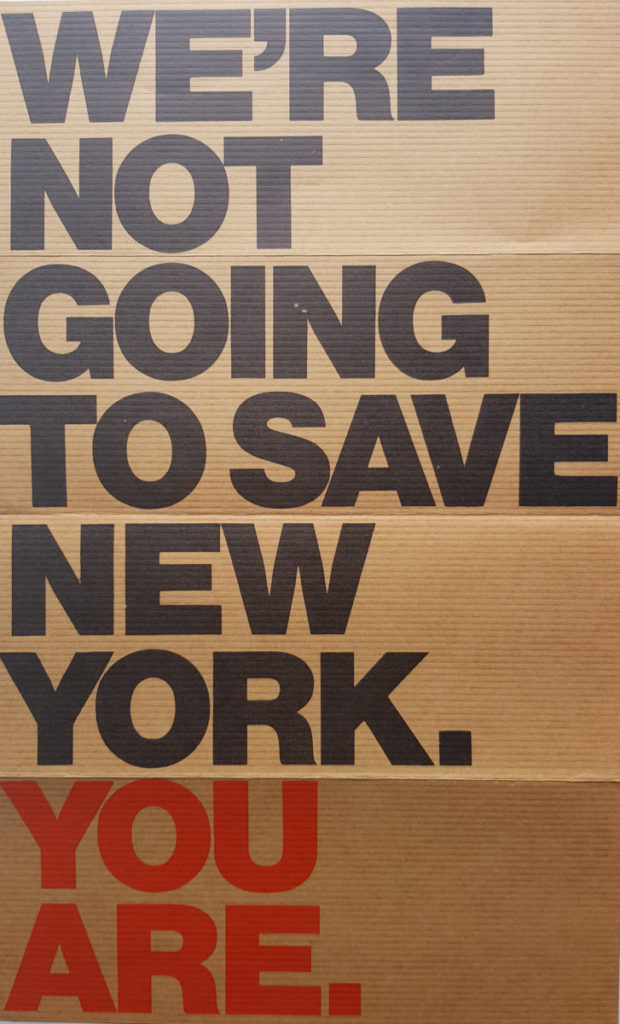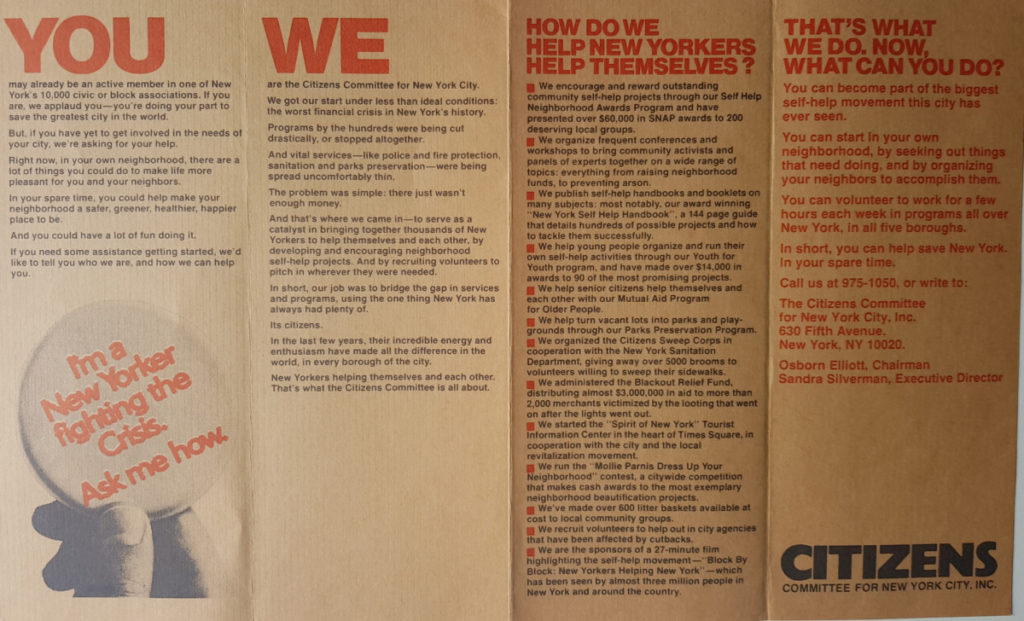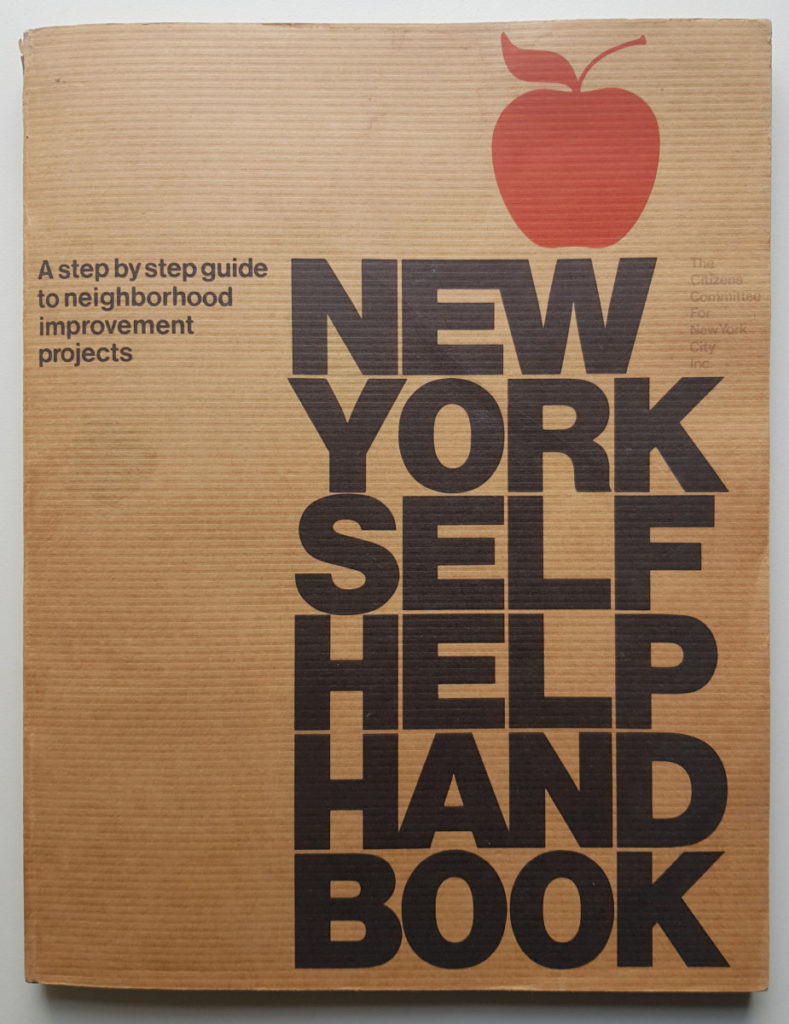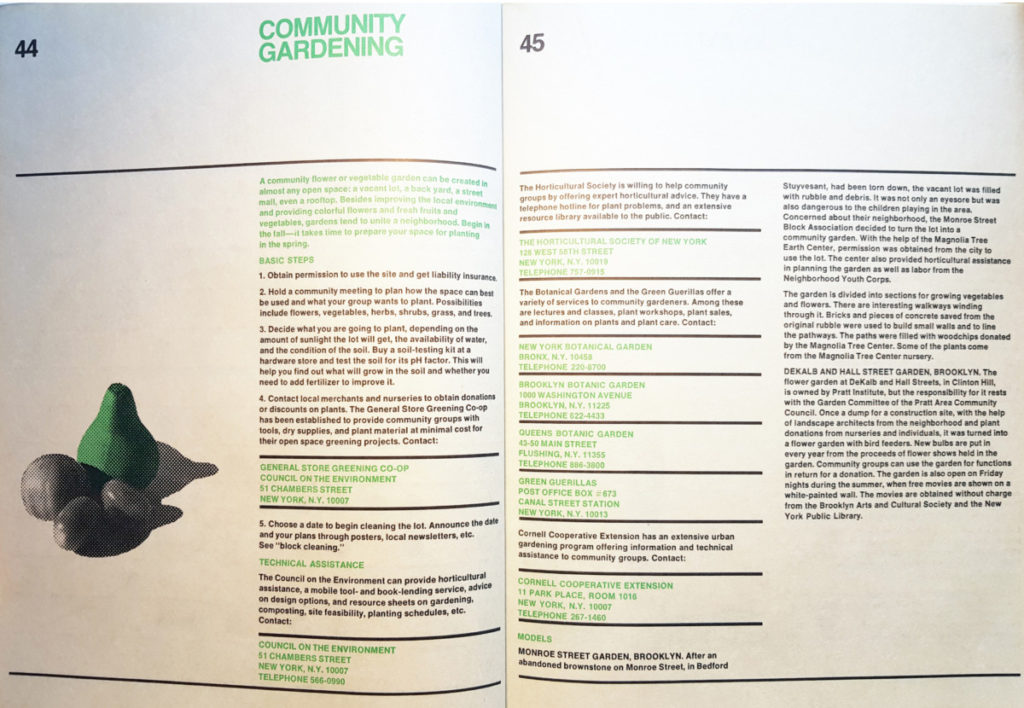Written by:
Not long ago, my mother handed me a book and some promotional material designed by an old family friend, British architect Roger Whitehouse, from an initiative he had been involved in back in the 1970s in New York City. She had kept it all of these years because she thought it was so beautifully designed and because it reflected a significant moment of change in New York City. My family moved to Washington DC in 1976, and when we went to see New York and to visit our friend, New York was not the city it is today. It was filthy, broke, and felt like a place that was on a precipice. It was in fact, about to embark on a massive movement of change.
What we didn’t know at the time, was that our friend was part of a movement that would play a hugely significant role in transforming the city to the one we know and love today. Picking up this material and having a read through it, it feels just what we need here in Britain today – a citizen-led movement of change and placemaking.
The Citizens Committee for New York City formed in November 1975 as a non-profit, non-partisan citizen action group in direct response to the city’s then fiscal crisis. It described itself as “a major catalyst in bringing together thousands of New Yorkers to help themselves and each other, by developing and encouraging neighbourhood self-help projects.” [1] The group worked across sectors, matching, as they put it, “public needs with private corporate means.”

The Citizens Committee for New York City’s flyer boldly stated “We’re not going to save New York. You Are.” The reverse side detailed what the Committee was doing to help New York City, but more importantly, was designed to inspire a movement of citizen-led change at scale.

Their New York Self Help Handbook: a step by step guide to neighbourhood improvement projects, which they published in 1977, was an extremely practical resource design to help make community action feel easy, and connected into a network of community-led initiatives. It took a holistic view to neighbourhood improvement with chapters covering: community organising; safety and security; sanitation; open spaces; projects in city parks; programmes for children and young people; senior citizens; housing and neighbourhood preservation; consumer affairs; and health and education.

The guide provided practical information about the organisations with governance responsibilities, but also practical tips for actions that citizens could take to help drive change in a complementary way. It set out clear guidance on what citizens had the agency to do, what was allowed by law, but also what that agency combined with initiative and creativity could produce. For example, the guide encouraged local groups to make use of and regenerate empty land and derelict sites, and offered some simple ideas and tips to get them going. However, alongside this, there was guidance on permissions and licenses required, as well as information on who to contact to seek them.

The handbook also helped people understand the urban landscape. A simple example was explaining that while it might be tempting to paint fire hydrants, this should not be done merely to make them more decorative. While citizens could paint them, they needed to be aware that there was a colour coding and numbering system used by the fire department, which was essential to fire safety in the city, that needed to be understood and adhered to.
This guide was about recognising what the city could do, but also what it couldn’t do on its own, and equally reminding citizens that their actions had to fit into a city-wide conversation and system. This was about enabling collaboration across city governance, private agencies and citizen groups.
This guidance was catalytic. A New York Times article in December 1977 [2] reported that since its formation, the group had “fostered the growth of 2,000 block associations from Co‐op City in the Bronx to St. George, S.I., from Brighton Beach in Brooklyn to East Harlem, from Riverdale in the Bronx to the Rockaways in Queens.”
The Citizens Committee for New York City is still active today, organising projects, enabling connections, fundraising and grant-making. To me, their New York Self Help Handbook from 1977 remains one of the best guides to civic action that I have seen, and a newly discovered inspiration to all of us trying to enable, foster and incubate civic leadership.
[1] New York Self Help Handbook, The Citizens Committee for New York Inc., 1977
[2] Citizens Group Handbook Urges New Yorkers to Help Themselves, The New York Times, 7 December 1977
If you’d like to contribute to our INSPIRED blog series, please contact deborah@theglasshouse.org.uk

